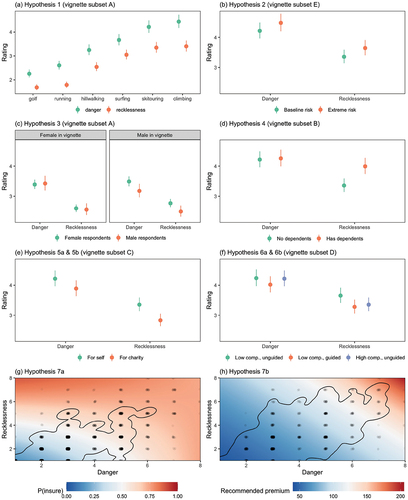Figures & data
Figure 1. Differences in model predicted mean danger and recklessness evaluations across sports and vignette conditions, with vertical lines denoting 95% confidence intervals (a) adventure sports are judged more reckless than non-adventure sports, although background risks were held constant (hypothesis 1); (b) increasing fatality rates by 100× has at most modest effects on ratings (H2); (c) male sports participants are judged in less danger and less reckless by male than female respondents (H3); sports participants were judged as (d) more reckless when the sport participant had dependants (H4) and (e) less reckless when doing an activity for charity (H5); (f) experience and guiding had no significant effect on ratings (H6); increasing perceived danger and recklessness increases (g) the tendency to judge additional insurance as required (H7a), and (h) increases insurance premiums (H7b). Contour lines in (g) and (h) denote areas containing 90% of observed responses, which are shown as jittered dots.

Table 1. Coefficients of models relating requests that sports participants pay additional insurance to take part in activities (RTP) to the perceived recklessness and danger of those activities. RTP increased with perceived recklessness and danger, even when fatality rates were fixed. Model coefficients are shown, with 95% confidence intervals in parentheses. All effects are significant at p< 10−4.
